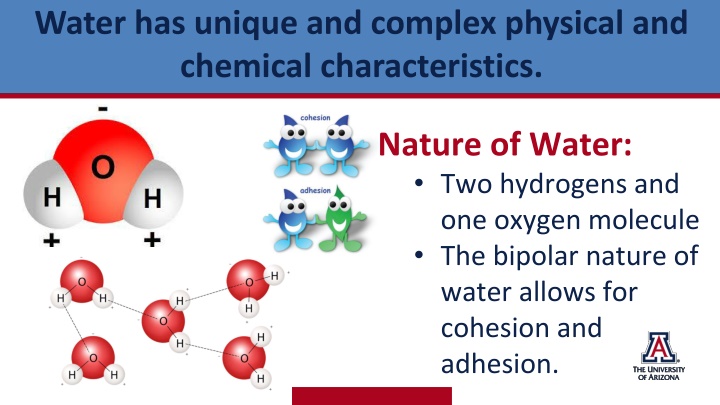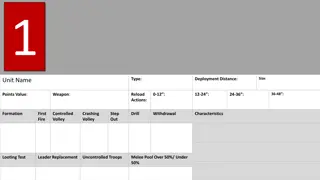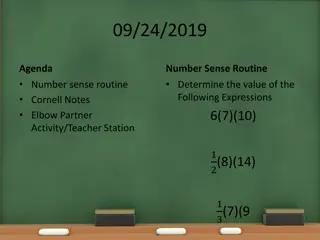
Exploring the Unique Characteristics of Water and the Water Cycle
Discover the physical and chemical uniqueness of water molecules, their role in cohesion and adhesion, and delve into the intricate processes of the water cycle. Engage in investigations, demonstrations, and simulations to understand the relationships between heat and water movement. Unravel the mysteries of hot versus cold water behavior and experience a whole-body simulation as water molecules. Explore the impact of heat on the water cycle and its importance in driving natural processes.
Download Presentation

Please find below an Image/Link to download the presentation.
The content on the website is provided AS IS for your information and personal use only. It may not be sold, licensed, or shared on other websites without obtaining consent from the author. If you encounter any issues during the download, it is possible that the publisher has removed the file from their server.
You are allowed to download the files provided on this website for personal or commercial use, subject to the condition that they are used lawfully. All files are the property of their respective owners.
The content on the website is provided AS IS for your information and personal use only. It may not be sold, licensed, or shared on other websites without obtaining consent from the author.
E N D
Presentation Transcript
Water has unique and complex physical and chemical characteristics. Nature of Water: Two hydrogens and one oxygen molecule The bipolar nature of water allows for cohesion and adhesion.
WATER CYCLE: Lesson 1.2 Molecules in Motion Investigative Question What are the relationships between heat and the movement of water in the water cycle?
WATERCYCLE: Molecules in Motion Demonstration Students will observe the motion of water molecules using food coloring so that those motions are visible and will brainstorm driving questions to explore what is happening.
WATERCYCLE: Molecules in Motion Create a See-Think-Wonder Chart What did you see/observe in the left jar and the right jar when food coloring was added? What ideas do you have about why the dye may have behaved the way it did in each jar?
WATERCYCLE: Molecules in Motion Investigation Why do you think the hot water rose while the cold water stayed in the vial? What does this experiment tell you about how hot water behaves versus cold water?
WATERCYCLE: Molecules in Motion Whole Body Simulation Students get to become water molecules and participate in a full-body activity to see how heat affects movement of molecules.
WATERCYCLE: Molecules in Motion Water Molecule Simulation https://phet.colorado.edu/sims/html/states-of-matter- basics/latest/states-of-matter-basics_en.html
Wrap-Up When we add or subtract heat to water, it changes, and that is important! What heat source drives the water cycle again? Lesson 1.2 Cause and Effect & Energy and Matter






















